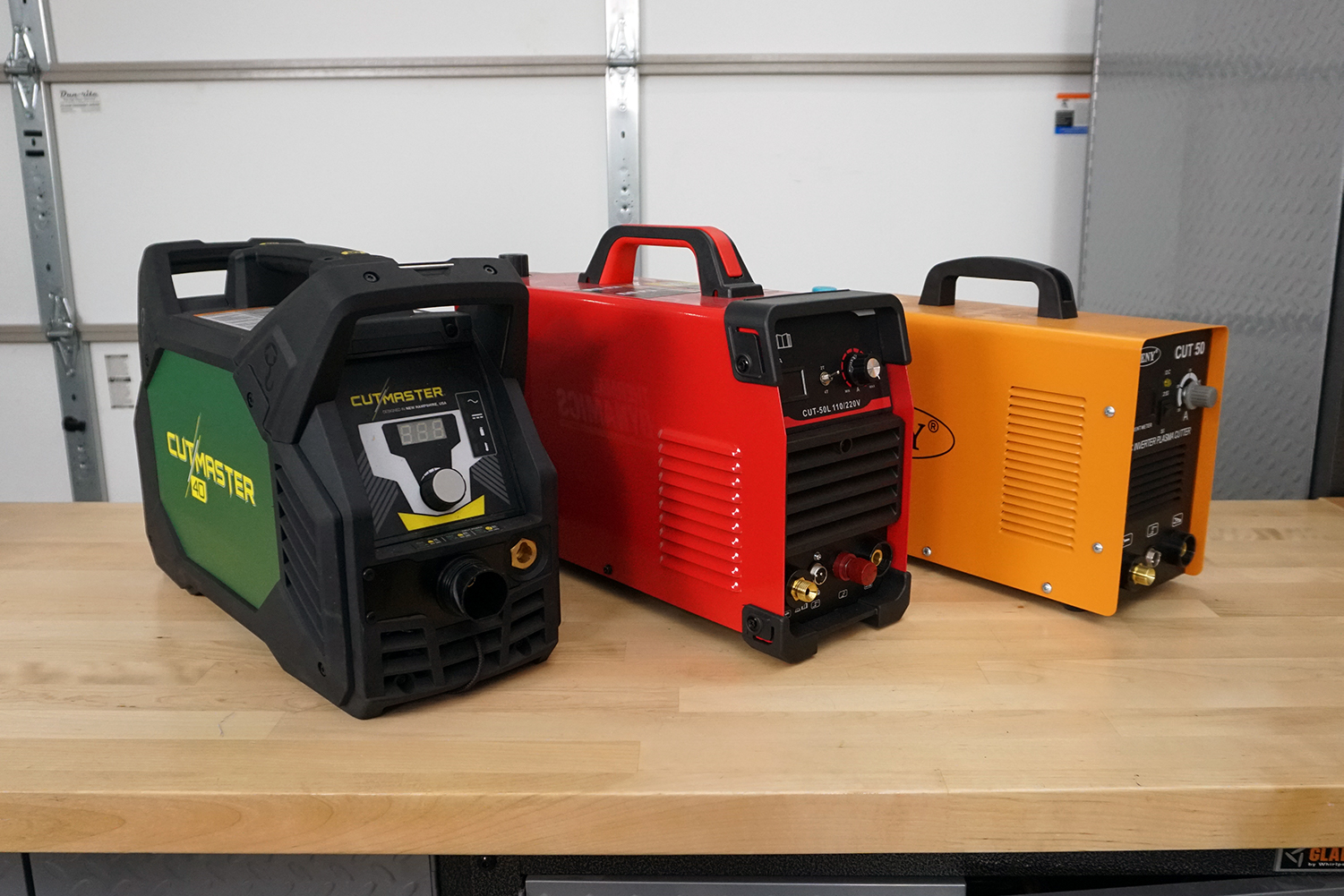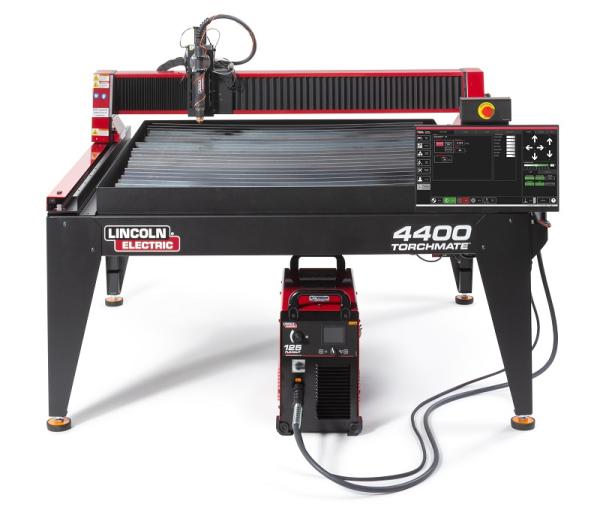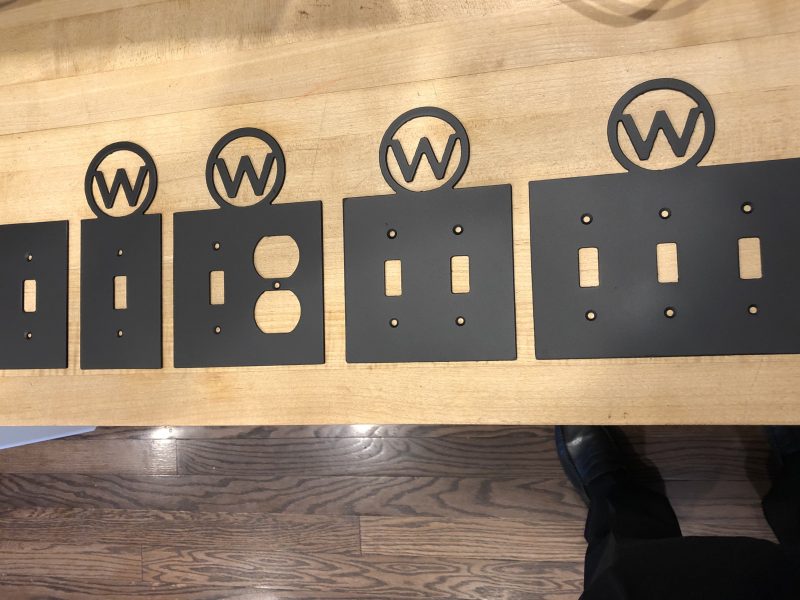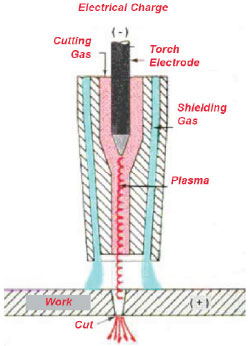Table of Contents
Are you in the market for a plasma cutter for your CNC machine? With so many options available, it can be overwhelming to determine which one is the best fit for your needs. The right plasma cutter can make a significant difference in your CNC machine’s performance and productivity. In this article, we’ll explore the different types of plasma cutters and help you make an informed decision on which one is the best for your CNC machine.
Choosing the right plasma cutter for CNC machines depends on the thickness of the material you will be cutting. For materials up to 1/2 inch thick, a 45-amp plasma cutter is ideal, while a 65-amp plasma cutter is best for materials up to 1 inch thick. If you will be cutting thicker materials, consider a 85-amp or 100-amp plasma cutter. Additionally, make sure to choose a plasma cutter with a high-quality torch and consumables for optimal performance.
What Type of Plasma Cutter is Best for CNC Machines?
If you are looking for a plasma cutter for your CNC machine, there are several factors to consider. CNC plasma cutters are used to cut precise shapes and designs on metal sheets. Therefore, the cutter must be able to cut through the metal sheet with accuracy and speed. In this article, we will discuss the different types of plasma cutters that are best suited for CNC machines.
1. High-Frequency Start Plasma Cutters
High-frequency start plasma cutters are the most common types of plasma cutters used for CNC machines. These cutters use a high-frequency spark to ionize the air between the electrode and the workpiece, creating a plasma arc. The plasma arc melts the metal, and compressed air blows the molten metal away, creating a clean cut.
The benefits of high-frequency start plasma cutters include their ability to cut through thick metal sheets, their affordability, and their ease of use. They also require less maintenance than other types of plasma cutters.
Advantages:
- Can cut through thick metal sheets
- More affordable than other types of plasma cutters
- Easy to use
- Require less maintenance
Disadvantages:
- Can cause electromagnetic interference
- Not suitable for cutting thin metal sheets
2. Pilot Arc Plasma Cutters
Pilot arc plasma cutters are another type of plasma cutter that is suitable for CNC machines. These cutters use a pilot arc to ionize the air and create a plasma arc. The pilot arc then transfers the plasma to the workpiece, creating a clean cut.
The benefits of pilot arc plasma cutters include their ability to cut through thick metal sheets, their ability to cut through rusted or painted metal, and their ability to cut through non-conductive materials. They also create less noise and less heat than other types of plasma cutters.
Advantages:
- Can cut through thick metal sheets
- Can cut through rusted or painted metal
- Can cut through non-conductive materials
- Create less noise and less heat than other types of plasma cutters
Disadvantages:
- More expensive than high-frequency start plasma cutters
- Require more maintenance
3. Inverter Plasma Cutters
Inverter plasma cutters are a newer type of plasma cutter that is becoming more popular for CNC machines. These cutters use a high-frequency inverter to create a plasma arc, which cuts through the metal sheet. Inverter plasma cutters are smaller and lighter than other types of plasma cutters, making them more portable.
The benefits of inverter plasma cutters include their portability, their ability to cut through thick metal sheets, and their ability to cut through non-conductive materials. They also create less noise and less heat than other types of plasma cutters.
Advantages:
- Portable
- Can cut through thick metal sheets
- Can cut through non-conductive materials
- Create less noise and less heat than other types of plasma cutters
Disadvantages:
- More expensive than high-frequency start plasma cutters
- Less reliable than other types of plasma cutters
4. Water-Injected Plasma Cutters
Water-injected plasma cutters, also known as water mist plasma cutters, are a type of plasma cutter that uses water to cool the plasma arc. These cutters are best suited for cutting thin metal sheets and creating fine cuts. They are also known for their ability to cut through non-ferrous metals.
The benefits of water-injected plasma cutters include their ability to cut through thin metal sheets, their ability to create fine cuts, and their ability to cut through non-ferrous metals. They also create less noise and less heat than other types of plasma cutters.
Advantages:
- Can cut through thin metal sheets
- Create fine cuts
- Can cut through non-ferrous metals
- Create less noise and less heat than other types of plasma cutters
Disadvantages:
- More expensive than high-frequency start plasma cutters
- Require more maintenance than other types of plasma cutters
5. Hybrid Plasma Cutters
Hybrid plasma cutters are a type of plasma cutter that combines plasma cutting with oxy-fuel cutting. These cutters are best suited for cutting thick metal sheets and creating beveled edges. They are also known for their ability to cut through non-ferrous metals.
The benefits of hybrid plasma cutters include their ability to cut through thick metal sheets, their ability to create beveled edges, and their ability to cut through non-ferrous metals. They also create less noise and less heat than other types of plasma cutters.
Advantages:
- Can cut through thick metal sheets
- Create beveled edges
- Can cut through non-ferrous metals
- Create less noise and less heat than other types of plasma cutters
Disadvantages:
- More expensive than other types of plasma cutters
- Require more maintenance than other types of plasma cutters
6. In-Line Plasma Cutters
In-line plasma cutters are a type of plasma cutter that uses a straight electrode to create a plasma arc. These cutters are best suited for cutting thin metal sheets and creating fine cuts. They are also known for their ability to cut through non-ferrous metals.
The benefits of in-line plasma cutters include their ability to cut through thin metal sheets, their ability to create fine cuts, and their ability to cut through non-ferrous metals. They also create less noise and less heat than other types of plasma cutters.
Advantages:
- Can cut through thin metal sheets
- Create fine cuts
- Can cut through non-ferrous metals
- Create less noise and less heat than other types of plasma cutters
Disadvantages:
- More expensive than high-frequency start plasma cutters
- Require more maintenance than other types of plasma cutters
7. CNC Plasma Cutter Table
The CNC plasma cutter table is the machine that holds the metal sheet while it is being cut. The table is usually made of steel and is designed to withstand the heat and pressure of the plasma cutter. The table also has a grid of slats or bars that allow the plasma arc to pass through and cut the metal sheet.
The benefits of a CNC plasma cutter table include its ability to hold the metal sheet securely, its ability to withstand the heat and pressure of the plasma cutter, and its ability to allow the plasma arc to pass through and cut the metal sheet.
Advantages:
- Holds the metal sheet securely
- Withstands the heat and pressure of the plasma cutter
- Allows the plasma arc to pass through and cut the metal sheet
Disadvantages:
- Expensive to purchase and maintain
- Requires a dedicated space to operate
8. CNC Plasma Cutter Software
CNC plasma cutter software is the program that controls the CNC machine and the plasma cutter. The software allows the user to input the design they want to cut and controls the movement of the plasma cutter. The software also controls the speed and intensity of the plasma arc.
The benefits of CNC plasma cutter software include its ability to control the movement of the plasma cutter, its ability to input designs and control the speed and intensity of the plasma arc, and its ability to automate the cutting process.
Advantages:
- Controls the movement of the plasma cutter
- Inputs designs and controls the speed and intensity of the plasma arc
- Automates the cutting process
Disadvantages:
- Expensive to purchase and maintain
- Requires training to use effectively
9. CNC Plasma Cutter Accessories
CNC plasma cutter accessories are additional tools and attachments that can be used with the plasma cutter. These accessories include items such as torch height control systems, fume extractors, and water tables. These accessories can improve the accuracy and efficiency of the plasma cutter.
The benefits of CNC plasma cutter accessories include their ability to improve the accuracy and efficiency of the plasma cutter, their ability to reduce fumes and smoke, and their ability to increase the lifespan of the plasma cutter.
Advantages:
- Improves the accuracy and efficiency of the plasma cutter
- Reduces fumes and smoke
- Increases the lifespan of the plasma cutter
Disadvantages:
- Expensive to purchase and maintain
- May require additional training to use effectively
10. Conclusion
Choosing the right plasma cutter for your CNC machine is essential for achieving accurate and efficient cuts. High-frequency start plasma cutters are the most common types of plasma cutters used for CNC machines due to their affordability, ease of use, and ability to cut through thick metal sheets. However, there are other types of plasma cutters, such as pilot arc plasma cutters, inverter plasma cutters, water-injected plasma cutters, hybrid plasma cutters, and in-line plasma cutters, that may be better suited for your specific needs. Additionally, accessories such as torch height control systems, fume extractors, and water tables can improve the accuracy and efficiency of your plasma cutter.
Frequently Asked Questions
What is a CNC Plasma Cutter?
A CNC (Computer Numerical Control) plasma cutter is a machine that uses a plasma torch to cut through various materials, such as metal, wood, and plastic. The CNC aspect of the machine means that it is controlled by a computer program that directs the torch to cut specific shapes and designs.
These machines are commonly used in industrial settings for cutting large quantities of metal, but they can also be used for smaller-scale projects, such as creating custom metal signs or artwork.
What Type of Plasma Cutter is Best for CNC Machines?
When it comes to choosing a plasma cutter for a CNC machine, there are a few factors to consider. One important factor is the amperage of the cutter. Generally, a higher amperage cutter will be better suited for cutting thicker materials.
Another factor to consider is the duty cycle of the cutter. The duty cycle refers to the amount of time that the cutter can operate continuously before it needs to cool down. For CNC applications, it is important to choose a cutter with a high duty cycle to ensure that it can handle long cutting sessions.
What is the Difference Between Air Plasma and High Definition Plasma?
Air plasma cutting is a more basic form of plasma cutting that uses compressed air to create the plasma arc. This type of cutting is generally used for thinner materials and is less precise than high definition plasma cutting.
High definition plasma cutting, on the other hand, uses a more advanced plasma arc that is capable of producing much higher temperatures. This allows for cleaner, more precise cuts, even on thicker materials. However, high definition plasma cutting machines are also typically more expensive than air plasma machines.
Can Any Plasma Cutter be Used for CNC Applications?
While many plasma cutters can be used for CNC applications, not all cutters are created equal. It is important to choose a cutter that is designed specifically for use with a CNC machine to ensure that it is compatible and will provide the necessary precision and accuracy.
In addition, some cutters may require additional components, such as a THC (torch height control) system, to be used with a CNC machine. It is important to research the requirements of the specific cutter before making a purchase.
What are Some Popular Brands of Plasma Cutters for CNC Machines?
There are many brands of plasma cutters on the market, but some of the most popular for CNC applications include Hypertherm, Thermal Dynamics, and Miller Electric. These brands are known for producing high-quality, reliable machines that are well-suited for industrial use.
Other factors to consider when choosing a brand include the availability of replacement parts and technical support, as well as the overall cost of the machine.
In conclusion, the type of plasma cutter that is best for CNC machines largely depends on the specific needs and requirements of the user. However, there are certain factors that should be taken into consideration when making a decision.
Firstly, it is important to choose a plasma cutter that is compatible with your CNC machine. This will ensure that the cutter can be integrated seamlessly into your existing setup and will work effectively.
Secondly, the power output of the plasma cutter is another important consideration. Higher power output plasma cutters are generally better for cutting thicker materials, while lower power output cutters are better suited for thinner materials.
Finally, the brand reputation and customer support offered by the manufacturer should also be taken into account. It is important to choose a plasma cutter from a reputable brand that offers excellent customer support, in case any issues arise during use.
By taking these factors into consideration and choosing the right plasma cutter for your CNC machine, you can ensure that you achieve the best possible results in your cutting projects.
Request a quote today!
[contact-form-7 id="1578" title="Contact form"]
Please compress the file into a ZIP or RAR file before uploading. Alternatively, send through your RFQ by email.
enquires@unitymanufacture.com





